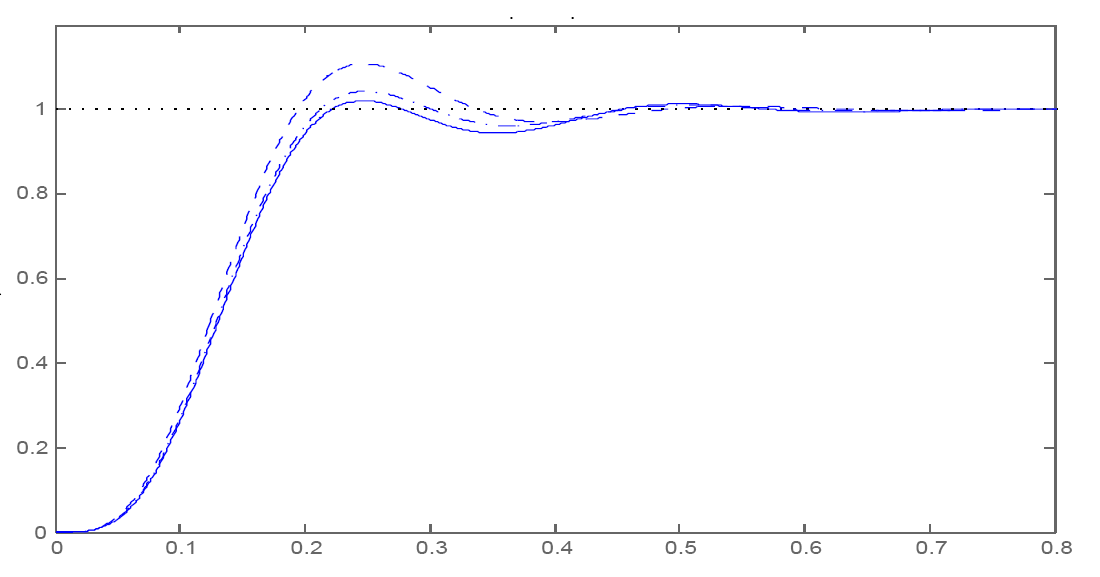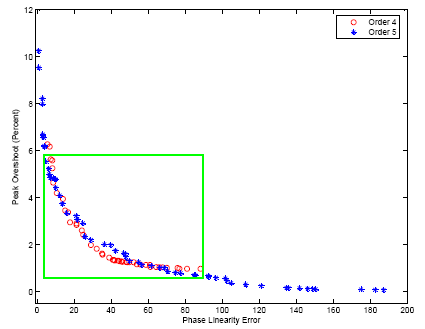|
|
|
Faculty: Una-May O'Reilly
Current Student: Varun Aggarwal
Alumni: Wesley O. Jin
Status: Active, within EVO-DesignOpt and recruiting new students
Opportunities: UROP Fall-Winter '06-'07, M.Eng '06-'07, UAP '06-'07
WHY AND WHAT?
Filters are an important part of all communication systems, be it analog/RF
or a digital implementation. The first step of filter design is filter
approximation, where the designer chooses a transfer function from one of the classical
approximation functions, i.e. Butterworth, Elliptic or Chebyshev. In the
early and mid 1900's, these approximation functions were revolutionary in facilitating
design. Given specification in frequency domain magnitude response (ωs,
ωp, Amax, Amin) and an objective, the designer could choose one of the
approximations and the respective coefficients from a table of values according to the order. For
instance, a Butterworth approximation is used if the designer's objective is maximum
flatness (least magnitude error near ω=0) and a Bessel approximation is chosen for maximum phase
linearity. In each choice, however, the designer is making a tradeoff. For example, a Butterworth approximation sacrifices on specificity
of the filter to ensure maximum flatness. This is problematic because usually the designer generally has more
than one design objective in mind. Additionally, the choice of the design is
influenced by time-domain characteristics such as peak overshoot and
settling time. In these circumstances, choosing from among classical approximations, the designer is provided with sub-optimal (with respect to his objectives) options.
This project's goal is to provide the designer with the flexibility of choosing a filter that
satisfies his design constraints and shows trade-off solutions with regard to
performance objectives in both frequency and time domain. For example, the designer can ask to achieve maximal
linearity in phase response and minimum peak-overshoot in trade with maximum
flatness with a constraint on settling time. Such design flexibility
is not possible with classical filter design methodology. To this end, we have devised the OptimFilt
framework.[1]
A related goal of OptimFilt is to aid the designer in choosing the order for the filter. A higher
order implies higher area and power. A designer does not wish to choose a higher
order unless it provides substantial improvement for the objectives the
design. How does the designer know how much improvement will be derived by
increasing the order? A goal of OptimFilt is to inform the decision of the designer by flowing information bottom-up throughout the
design flow. It will provide the designer with a
visualization of the performance space of filter for each order. This will enable the
designer to choose the optimal order appropriate to the
trade-off issues.
This approach of modeling feasibility space bottom-up [3] will enable
optimal System-Level design. Given the feasibility space, the
designer can then use and adjust system level performance specifications to
choose the order and the trade-off point for the order. This will
circumvent the sub-optimal solutions created by conventional design flow
that rely on experience and the guesses of the designer. These approaches
will yield filter approximations which are optimal for filter performance
objectives and for the crucial objectives of power and area. To address the low
power criteria effectively, we include Q as an additional minimization objective in
OptimFilt.
We plan to conduct real-world case studies to assess the usefulness
and performance of the OptimFilt tool.
HOW?
We use an evolutionary algorithm called Particle Swarm
Optimization (PSO) to design filter approximations given objectives and
constraints. The algorithm is suited to the filter design problem where
closed-form mathematical expressions for constraints and
objectives can not be formulated. PSO has shown good results in finding the global optima for
highly non-linear multidimensional optimization problems. It can be extended
to multiple objectives.
We have an end-to-end system based on PSO, which can accept multiple
constraints and objectives and gives an optimal filter realization according
to it. The first paper on this approach is under review [1]. We showed
how our approach beats convex optimization techniques like Sequential
Quadratic Programming [2] by making a one-to-one comparison. For
illustration, the time response of a Butterworth, SQP-tuned and PSO-filter
are shown in Figure 1. The filters were tuned for maximal phase linearity
and minimum peak overshoot.

Figure 1: Step Response for Butterworth (- -),
SQP (-.) and OptimFilt Solution (line). X-axis: time(s), Y-axis:
Magnitude |

Figure 2: Performance Space for
all-pole filter with respect to phase linearity and peak
overshoot for order 4 and 5. |
We have just developed an algorithm which enumerates trade-off solutions across
multiple objectives. This is our first step towards performance space
modeling of filter design. In Figure 2, we show the performance of a filter
on the objectives of phase linearity and peak overshoot for orders 4 and 5.
If the designer wants a design in the trade-off space bounded by the
rectangle, there is no advantage to using a higher order. However,
a higher order would be advantageous if the design is in the space
outside the rectangle. Now the order decision can be made comfortably while knowing a
quantitative measure of performance improvement.
Design of reliable algorithms to be able to do this for multiple
objectives is underway. Objectives which address circuit realization
issues (for instance, low sensitivity of filter performance with
component value variation) will also be included in these algorithms. We will address real-world case studies to
assess the usefulness and performance of the algorithms.
References:
[1] V. Aggarwal, M. Mao and U. M. O'Reilly. Filter Approximation Using
Explicit Time and Frequency Domain Specifications. Under Review, (Available on
Request)
[2] N. Damera-Venkata and B. Evans. An automated framework for
multicriteria optimization of analog filter designs. In IEEE Trans. Circuits
Syst. II , Vol. 46, pg 98190 Aug. 1999.
[3] G. G. E. Gielen, Trent McConaghy, Tom Eeckelaert. Performance space
modeling for hierarchical synthesis of analog integrated circuits. Design
Automation Conference, pp. 881-886, 2005
|

